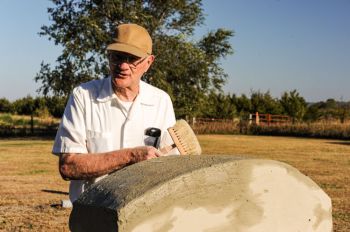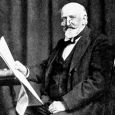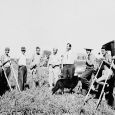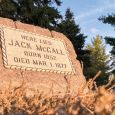The Gift of South Dakota
Subscriptions to South Dakota Magazine make great gifts!
Subscribe today — 1 year (6 issues) is just $29!
Bob’s Last Story about Jack McCall
Jul 6, 2021
Bob Hanson knew all about Yankton’s history. Fortunately, he was also a mason, so whenever he came to inspect the nearly 150-year-old bricks of the Pennington House — the home of Dakota Territory Gov. John Pennington and today the publishing headquarters for South Dakota Magazine — he always had a story.
Jack McCall, the man who murdered Wild Bill Hickok at Saloon No. 10 in Deadwood in August of 1876, was one of his favorite subjects. After being acquitted at a hastily assembled miners’ court in Deadwood, U.S. marshals arrested McCall and brought him to Yankton, where he stood trial again, was convicted and was hanged just north of town.
There’s a theory among historians that government officials set out to arrest McCall and retry him in order to establish Dakota Territory’s jurisdiction over the Black Hills, an area still on the fringes of the legal frontier in the 1870s. Bob believed in more sinister motives: that federal officials could have orchestrated Hickok’s killing to assert such authority. He became even more convinced when he discovered a mystery at the Mead Cultural Education Center, which houses the Yankton County Historical Society.
Among the society’s treasured pieces of local history is a ledger book from the U.S. marshal’s office. It’s mostly a record of correspondence between the marshal in Yankton and Washington officials. Entries begin in 1862 and conclude in May of 1877, just two months after McCall’s execution. Bob’s interest was piqued by two missing pages that would have contained entries between April 3 and 9, 1877. For someone who believed a much larger conspiracy existed, those two pages were the equivalent of the missing 18 minutes of Watergate tape from the Nixon scandal.
I visited the Mead building to examine the ledger book. It measures about 12 by 18 inches, contains more than 600 pages and weighs about as much as a cinder block. The pages are filled with the beautiful script handwriting common on documents from the 19th century, although much of the reading is mundane unless you’re captivated by expense reports, requests for 2-cent stamps, expense reports, applications for vacation time and expense reports.
Four pages are bookmarked with thin white strips of paper. A curator told me Bob requested the book so often — right up until his death in 2018 — and read those pages so religiously that they marked them for him. One strip with the word JAIL written across the top marked a passage that explained the origins of Yankton’s first jail on Linn Street. Other pages include correspondence between Marshal J.H. Burdick and Attorney General Alphonso Taft that clearly show the subject of jurisdiction over the Black Hills was an issue.
After several hours of reading, I concluded there was likely no smoking gun — either in the book or the missing pages. Local historian Jim Lane, who has also extensively researched McCall’s time in Yankton, agreed. “Bob loved a good story, and he had a lot of fun with it. He kind of pushed the conspiracy theory,” Lane says. “When they hauled McCall back to Yankton, the territorial capital established legal authority over the Black Hills. That’s when they say that if there’s going to be a trial out here, it’s going to be decided by Dakota Territory. Bob was a little bit right with the theory that they wanted this to happen. But I don’t think anyone assassinated Wild Bill Hickok for political means.”
Jack McCall spent just seven months in Yankton, and he’s been dead for 144 years, but he’s never far from the minds of people in Yankton, as we discovered for a story in our March/April 2021 issue. The courthouse in which he stood trial at Third and Capital still stands. A plaque on the side of the building notes the courtroom’s location “directly back of this marker.” It is to be taken literally given the sign’s placement well above eye level.
The jail where McCall was held is now an apartment building at Fifth and Douglas. Its owner told us that before renovations there were still bars in the basement. Another marker stands at the corner of 31st and Broadway where the gallows stood, and a memorial headstone was placed in Sacred Heart Cemetery in 2017, though it does not mark McCall’s actual grave, the location of which within the cemetery is another local mystery.
I bet Bob would have had a lot to say about that.











Comments
I like to think he still speaks to us.